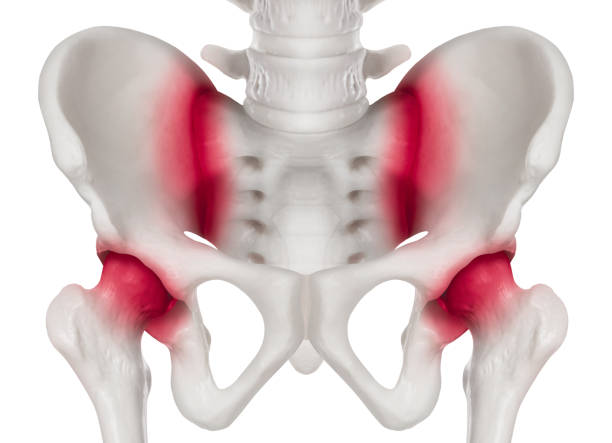Sacroiliitis / Hip Pain
Are you above the age of 40 or have a physically demanding job? If so, you are at higher risk of sacroiliitis, a condition where one or both of your sacroiliac joints become inflamed. These joints are found where your lower spine and pelvis meet.

Signs & Symptoms
SI joint pain will cause significant discomfort in your buttocks and might extend to your lower back, groin, and down the legs. The pain worsens if you stand for extended periods, run, or climb the stairs. You might also aggravate the situation by continuously putting more weight or pressure on one leg. Sitting for a long time will also cause additional stiffness, as will getting up from bed in the morning. Aside from the pain, people suffering from sacroiliitis often report having a fever.
Common Triggers
There are a few causes of sacroiliitis. If one or more of the following points hit home, you might be at higher risk of developing the condition:
- Recently suffered a traumatic injury through a fall or an accident
- Diagnosed with arthritis, particularly wear-and-tear arthritis (osteoarthritis)
- Pregnant or recently given birth
- Urinary tract infection
- Osteomyelitis
- Endocarditis
- Inflammation of the SI joint(s)

Diagnosis
Lower back pain happens often and can be caused by many things. Therefore, sacroiliitis is not easy to diagnose. To determine if you have the condition, your doctor will perform a physical exam to pinpoint the source of the pain. Expect your doctor to put pressure on your hips and buttocks area and move your legs around to exert stress on your SI joints.
Additionally, a technician might take an X-ray of your pelvic area to examine signs of damage on the joints. If your doctor suspects ankylosing spondylitis (an inflammatory disease causing vertebrae fusion), an MRI might be necessary for a clearer image of bone and soft tissues.
Another form of diagnosis is an anesthetic injection into your sacroiliac joints. If the jab results in pain relief, it stands to reason that the joints are causing you problems. However, this test is not 100% reliable as the anesthetic can spill into nearby areas.
Treatment
There is no one-size-fits-all solution for SI joint pain. Your doctor will decide on the best course of treatment based on your condition. Here are some possibilities:
- Medication
Over-the-counter pain meds might not help. Thus, stronger drugs, muscle relaxants, or TNF inhibitors may be necessary.
- Therapy
Together with your doctor, a physical therapist will guide you through range-of-motion and stretching exercises to strengthen your muscles.
- Surgery
SI fusion surgery is minimally invasive and involves packing bone into the space between the sacrum and ilium before inserting screws for stability.
- Joint injections
The doctor will administer a shot of lidocaine or a steroid for pain management.
- Radiofrequency treatment
Rhizotomy, or radiofrequency ablation (RFA), will sever the nerve roots.
- Electrical stimulation
A spinal cord stimulator, an electronic device the size of a pacemaker, is placed near your spinal cord to deliver low-level current for pain management.
OFFICE HOURS
Monday: 8 AM - 4:30 PM
Tuesday: 8 AM - 4:30 PM
Wednesday: 8 AM - 4:30 PM
Thursday: 8 AM - 4:30 PM
Friday: 8 AM - 4:30 PM
Saturday: Closed
Sunday: Closed
PROFESSIONAL DOCTORS
Dr. Schell has designed surgical techniques now used by many spinal surgeons.
MODERN EQUIPMENT
The most up-to-date medical equipment, to give you the best care that you deserve.
Professional spinal care and pain care experts are standing by to assist you. If we are not able to answer your question without an on-site appointment, we can schedule one for you.


